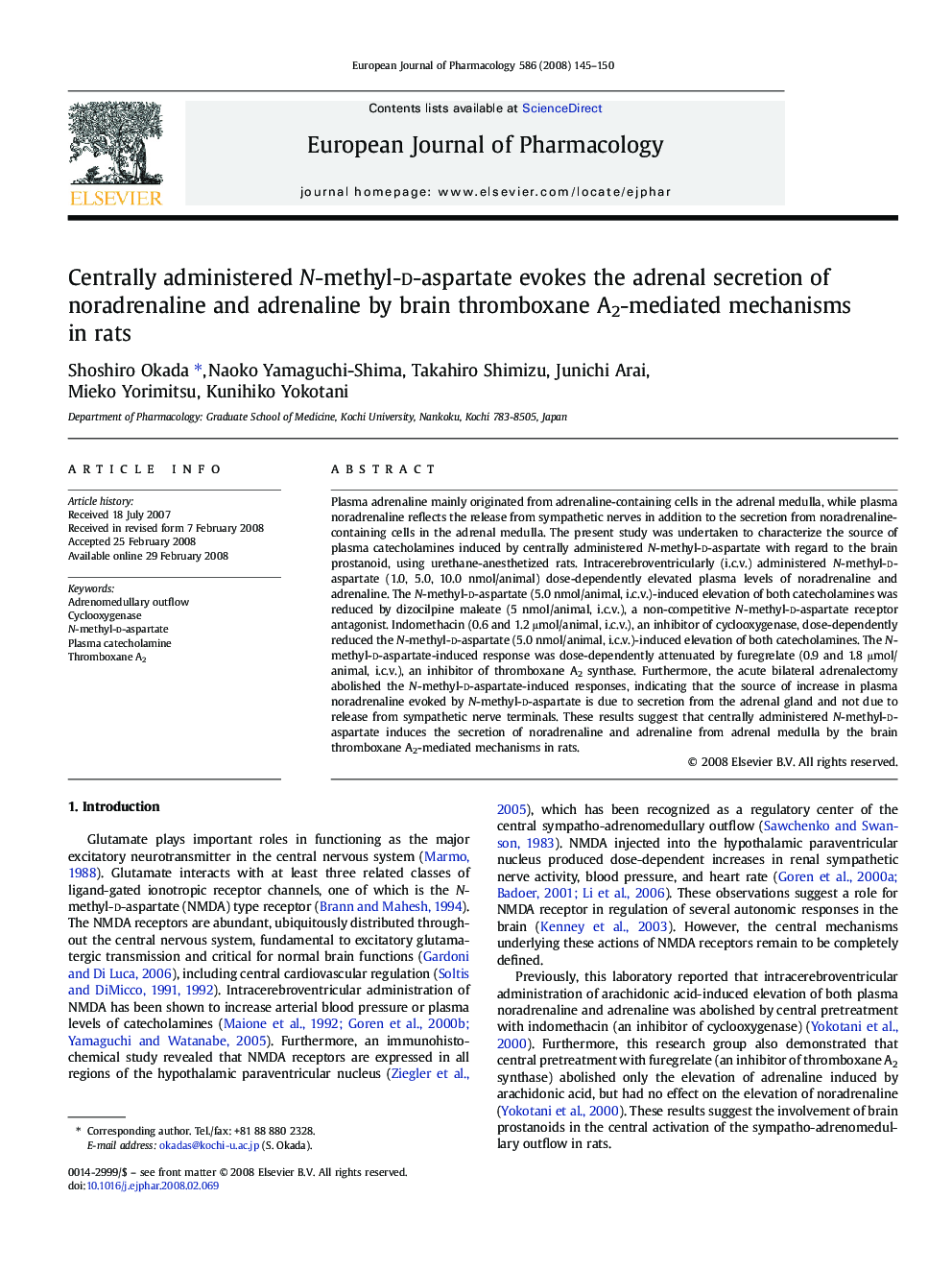| Article ID | Journal | Published Year | Pages | File Type |
|---|---|---|---|---|
| 2535251 | European Journal of Pharmacology | 2008 | 6 Pages |
Plasma adrenaline mainly originated from adrenaline-containing cells in the adrenal medulla, while plasma noradrenaline reflects the release from sympathetic nerves in addition to the secretion from noradrenaline-containing cells in the adrenal medulla. The present study was undertaken to characterize the source of plasma catecholamines induced by centrally administered N-methyl-d-aspartate with regard to the brain prostanoid, using urethane-anesthetized rats. Intracerebroventricularly (i.c.v.) administered N-methyl-d-aspartate (1.0, 5.0, 10.0 nmol/animal) dose-dependently elevated plasma levels of noradrenaline and adrenaline. The N-methyl-d-aspartate (5.0 nmol/animal, i.c.v.)-induced elevation of both catecholamines was reduced by dizocilpine maleate (5 nmol/animal, i.c.v.), a non-competitive N-methyl-d-aspartate receptor antagonist. Indomethacin (0.6 and 1.2 μmol/animal, i.c.v.), an inhibitor of cyclooxygenase, dose-dependently reduced the N-methyl-d-aspartate (5.0 nmol/animal, i.c.v.)-induced elevation of both catecholamines. The N-methyl-d-aspartate-induced response was dose-dependently attenuated by furegrelate (0.9 and 1.8 μmol/animal, i.c.v.), an inhibitor of thromboxane A2 synthase. Furthermore, the acute bilateral adrenalectomy abolished the N-methyl-d-aspartate-induced responses, indicating that the source of increase in plasma noradrenaline evoked by N-methyl-d-aspartate is due to secretion from the adrenal gland and not due to release from sympathetic nerve terminals. These results suggest that centrally administered N-methyl-d-aspartate induces the secretion of noradrenaline and adrenaline from adrenal medulla by the brain thromboxane A2-mediated mechanisms in rats.
